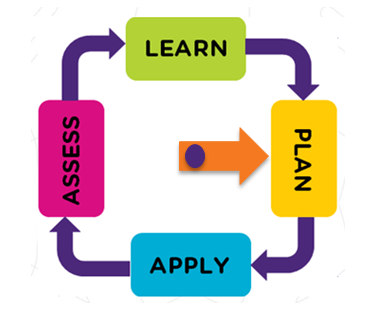Understanding the Learning Cycle Part Two: Planning
JULY 12, 2021
You’ve probably heard the expression “failure to plan is planning to fail.” Nowhere is this more true than when it comes to teaching and learning. In my last blog, I discussed the first stage of the four-part Learning Cycle: Learning. This time, we’re going to take a closer look at the Planning stage.

Starting with the End in Mind
In the Learning Cycle, planning takes place after learning and before teachers apply what they have learned in the classroom. Once teachers are introduced to new material, they then need time to plan how they will apply it in their classrooms. The planning process should start with the end in mind: what goals is the new strategy or program designed to achieve? And what steps do teachers need to make during implementation to ensure that these goals are met? This is not a rote process; every classroom is different. Teachers must figure out where the new program or strategy fits into the standards they teach, how they will integrate it into their lessons, and how they will adapt it to the specific and unique needs of their students. Without this kind of thoughtful and deliberate planning, the new strategies and skills they learned during the Learn phase of the cycle will never find their way into regular classroom practice.
Elements of an Effective Collaborative Learning Session
Planning should be done collaboratively. This can be done within the context of a formal Professional Learning Community (PLC) or in small grade-level or content-area teams. Sometimes, it can be useful to plan for vertical alignment across several grade levels. Planning sessions need to have some structure. Often, “planning” devolves into an exchange of cool activities and fun ideas. But effective planning within the context of the Learning Cycle should be so much more. An effective planning session has several elements.
- Standards: Planning must always start with deconstruction of the standards to ensure that teachers fully understand them. What do students need to know or be able to do? What does mastery look like? How is it measured?
- Best practices: How does the new strategy or program address the standard? What are best practices in applying the new strategy in the classroom?
- Data: How are students performing currently? What skill gaps are identified in looking at student performance data?
- Response: How can the new strategy be applied to address the needs identified in looking at the student data? Does it need to be adapted in any way to meet the needs of individual students or the class?
- Lesson design: Only now can teachers start thinking about what the actual lesson will look like. How much time will it take? What are the elements of the lesson? How can teachers make it active and engaging for students? How will differentiation be provided for students with different learning needs?
Unfortunately, teachers aren’t always given the time and training they need in order to plan effectively. Teacher teams may spend a lot of time up front before the school year begins to plan implementation of new strategies and programs introduced in professional development. But planning for ways to integrate the new strategies in the classroom needs to happen naturally during a teacher’s regular planning time throughout the school year if these ideas are ever going to become anything other than “something new we have to do this year.” When initial planning is completed, teachers are ready to apply the new strategy or program with their students. We’ll take a closer look at the Apply phase of the Learning Cycle next time.
Questions to Think About
For teachers: How can you make planning sessions with your PLCs or teams more productive? What kinds of data and information should you gather before meeting with your team? For administrators: Do teachers have planning time built into their schedules throughout the school year? How can you help them make the most of this limited time?
Continue Reading
July 2, 2025
A Meta-Analysis of studies showed that coaching, along with group training, curricular and instructional resources made a larger impact on the effects of teaching and student achievement.
June 16, 2025
At Thinking Maps, we are committed to creating a platform that not only meets but exceeds the expectations of our users. That’s why we’re thrilled to roll out a host of new user experience updates to the Thinking Maps Learning Community (TMLC). These updates represent a significant leap forward in usability, design, and functionality, ensuring a seamless and engaging experience for all users.
May 29, 2025
When it comes to professional learning for teachers, coaching has emerged as an effective method for fostering meaningful, long-term change in teaching practices. By offering personalized support, ongoing feedback, and practical application, coaching meets teachers where they are and provides the tools they need to thrive.
May 1, 2025
Artificial Intelligence (AI) is transforming education, from custom content in a minute to personalized learning. But with this surge in AI adoption comes a critical challenge for educators and students alike—the need to strengthen critical thinking skills. While AI offers immense potential, it cannot replace the human ability to think analytically, question assumptions, and make independent judgments.